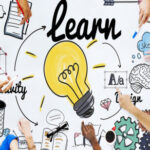Education is a powerful tool that equips individuals with knowledge and skills necessary to navigate the challenges of life. However, there has always been a noticeable gap between the theoretical knowledge acquired in classrooms and its practical application in the real world. As students transition from the structured environment of the classroom to the complexities of the real world, it becomes essential to bridge this gap. In this blog, we will explore the importance of bridging the divide between education and the real world and discuss some effective strategies to accomplish this crucial task.
Understanding the Gap:
The gap between education and the real world is not a new phenomenon. Traditional educational systems have often focused primarily on theoretical concepts and rote memorization, with limited emphasis on practical application. As a result, students often find themselves ill-prepared when faced with real-world challenges that require critical thinking, problem-solving skills, and practical expertise. This disconnect can lead to frustration, lack of confidence, and hinder the transition from education to meaningful employment.
Importance of Bridging the Gap:
1)Enhancing Employability: Bridging the gap between education and the real world is essential for improving students’ employability. Employers seek individuals who can apply their knowledge and skills to solve real-world problems, collaborate with others, and adapt to changing circumstances. By incorporating practical experiences into education, students become better equipped to meet the demands of the job market.
2)Fostering Critical Thinking: The real world is dynamic and multifaceted, requiring individuals to think critically and analyze situations from various angles. Bridging the gap between education and the real world encourages students to think beyond textbook knowledge. By engaging in experiential learning and practical projects, students develop critical thinking skills, allowing them to approach problems creatively and find innovative solutions.
3)Building Confidence: When students can directly apply what they have learned in the classroom to real-world situations, their confidence grows. Practical experiences help students realize the value of their education and build a sense of self-assurance in their abilities. This confidence extends beyond academic pursuits and translates into personal and professional success.
Strategies for Bridging the Gap:
1)Experiential Learning: Encourage educational institutions to incorporate experiential learning opportunities, such as internships, apprenticeships, and field trips, into their curricula. These experiences allow students to apply theoretical concepts in real-world settings, gain practical skills, and develop a deeper understanding of their chosen fields.
2)Industry-Academia Collaboration: Facilitate partnerships between educational institutions and industries to ensure that the curriculum aligns with current industry needs. Regular interaction with professionals in the field can provide students with insights into real-world challenges, emerging trends, and the skills required for success.
3)Project-Based Learning: Integrate project-based learning approaches into the classroom. Assign students real-world projects that require research, critical thinking, problem-solving, and teamwork. By working on tangible projects, students develop practical skills and learn to navigate the complexities of real-world scenarios.
4)Mentoring and Internship Programs: Establish mentorship programs where experienced professionals can guide students in their transition from education to the real world. Additionally, provide opportunities for internships to allow students to gain hands-on experience in their chosen fields, applying classroom knowledge to practical situations.
5)Emphasize Soft Skills: Beyond technical knowledge, soft skills such as communication, collaboration, adaptability, and leadership are vital for success in the real world. Integrate opportunities for students to develop these skills through group projects, presentations, and public speaking engagements.
Conclusion:
Bridging the gap between education and the real world is crucial for preparing students for a successful transition into professional life. By incorporating experiential learning, fostering critical thinking, and emphasizing practical skills, educational




